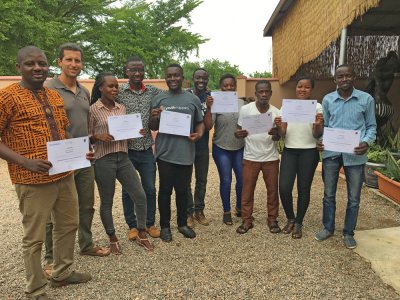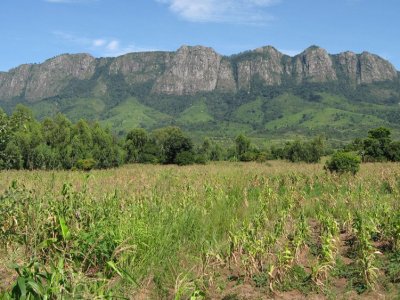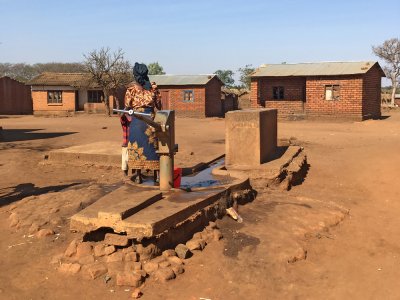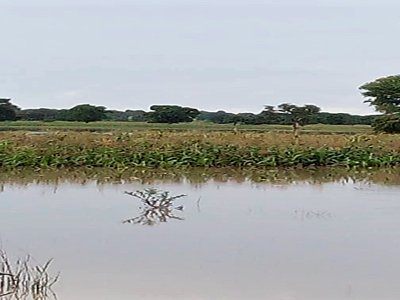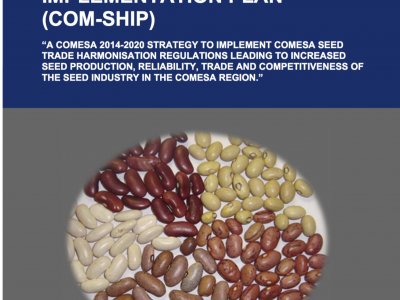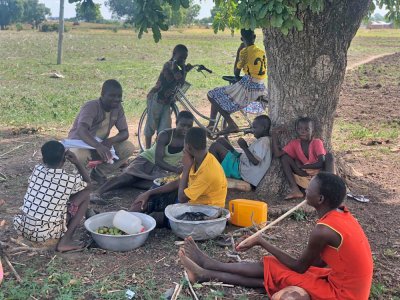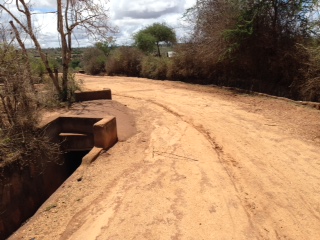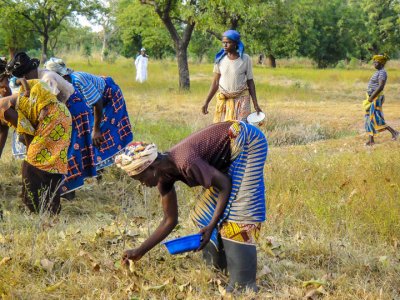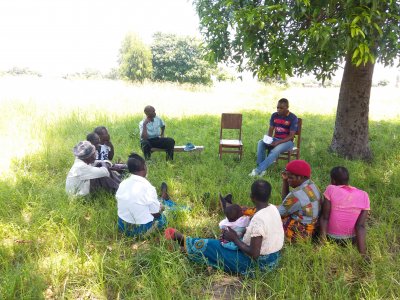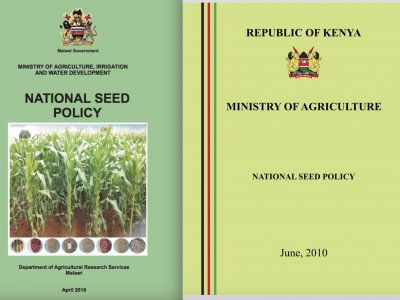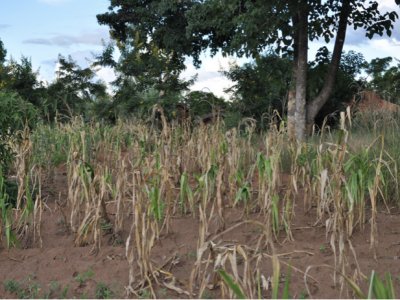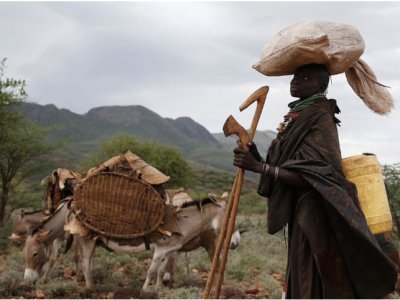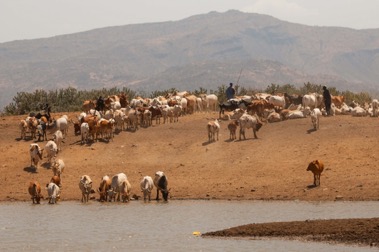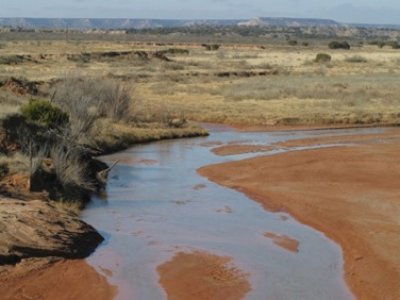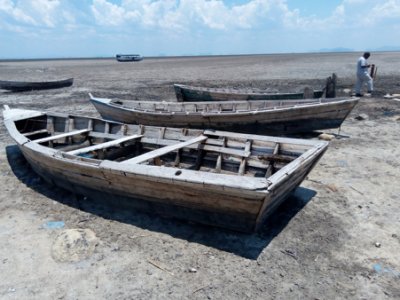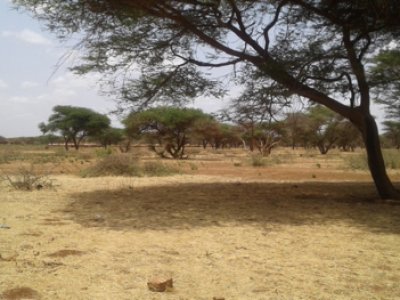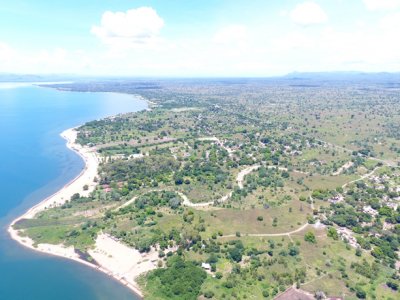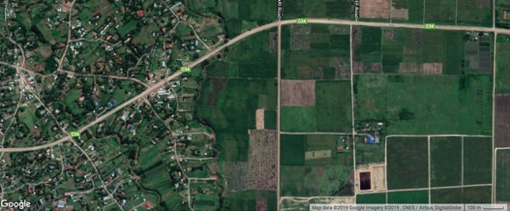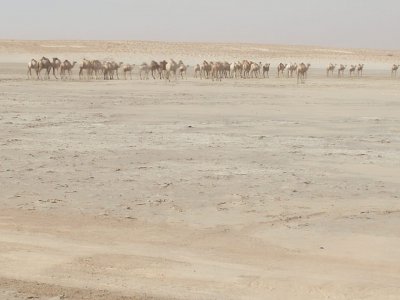Small Research Projects (SRPs)
BRECcIA has had many Small Research Projects. Click below to find out more about each project.
Capacity building and variability in the drylands of Ghana and Kenya
This research and research capacity building project takes a community-engaged approach to researching equity, resilience and livelihoods within the context of land restoration interventions in Ghana and Kenya. We are working in Talensi district in Upper East Region of Ghana and Kitui County in Kenya.
Land cover changes and runoff assessment at sub-basin level: A SWAT + application in the drylands of Malawi
The study aims to use geospatial data to quantify catchment runoff as well as determine the effects of agricultural lands on water quality and quantity across lake Chilwa basin in Zomba catchment of southern Malawi.
Spatial climate change vulnerability assessment of livelihoods in the drylands of Ghana, Kenya and Malawi
This research aims to explore the vulnerability of agricultural and rangeland production system livelihoods to climate variability and change across the gradient of dryland socio-ecological systems (i.e. dry sub-humid, semi-arid and arid) in Ghana, Kenya, and Malawi.
An assessment of flooding from dam releases and its impacts on diarrhea disease and microbiological contamination of water sources and vegetables in selected dryland areas in Northern Ghana.
The annual scheduled release of water from the Bagre Dam on the White Volta in the Northern parts of Ghana results in significant downstream damage to farmlands and property with attendant public health issues. For the past two decades, such water releases have resulted in livelihood losses among affected communities.
Comparative analysis of mainstreaming climate information services used for water and food security in the drylands of Malawi, Ghana, and Kenya: supply versus demand
Climate variability has greatly affected livelihoods in many part of sub-Saharan Africa where 90% of the agriculture is rain-fed. The impacts are more pronounced among the most vulnerable groups within the affected communities due to their low adaptive capacity to climate shocks. Intra-gender differences have also been known to shape the adaptation options and adaptive capacity of communities.
Food Beliefs and Food Security amidst Climate Change in Drylands of Northern Ghana
This research aims to understand the implications of food beliefs for food security amidst climate change impacts in dryland communities of Northern Ghana. Food beliefs refer to individual and societal concepts about food preferences. The study seeks to employ participatory learning and action to investigate how people’s local food beliefs and cultural norms change or how the navigate their livelihoods to maintain their food beliefs to ensure food security in a changing climate.
Building capacity for food and water security policy Kitui and Wajir counties of Kenya
I will be addressing the challenge of policy uptake within food and water security, focusing on Kitui and Wajir counties of Kenya. In the Kenyan context there are a number of policies addressing food and water security in the drylands.
Assessing wellbeing outcomes of women Shea processors in Northern Ghana
Shea production in the drylands of northern Ghana help reduce poverty through local sale and exports. It as well increases food security among the population by providing income for subsistence.
Aims and potential impact of Resilience SRP
Using applied community based anthropological field methods, my research project aims at generating information that will help understand why communities supported with food and water security interventions via NGOs and government are not developing resilience to food and water related shocks in Malawi.
Analysis of National Seed Policies for Malawi (2018) and Kenya (2010): implications for water and food security resilience building in drylands
In agriculture seed has the highest ability to limit production and this has been complicated by climate variability. Two seed systems, formal and informal, exist in Malawi and Kenya. The formal seed system is mainly comprised on the multi-national companies where as the inform seed system is traditionally managed by farmers with some support from Farmer Organisations and NGO’s.
Assessing the contribution of soil properties on dry spell vulnerability and food insecurity in Malawi
In the context of extreme weather events, dry spells are increasingly affecting agricultural production. The effects are more pronounced in a country like Malawi that is heavily dependent on rain fed agriculture.
Determining resilience attributable bio-physical, social/gender, economic and political factors that influence Food and Water Security in ASALs of West Pokot and Turkana Counties-Kenya
Food and Water Insecurity is a defining characteristic of the Dry Land Ecosystems in Kenya. ASALs in Kenya include expansive rangelands where pastoralism is mainly practiced by approximately 10 million people.
Trends in climate variability, land use change, watershed governance and implications on food security in the dryland of Suam River Basin, West Pokot County, Kenya
In Kenya, it has often been easier for the central government to decentralize powers to the county governments than to ensure that the county governments have needed resources, capabilities and accountability necessary for river basin management.
Managing invasive shrub species for enhanced social livelihoods in Turkana drylands of Kenya
Turkana County is the largest, most arid and least populated county in Kenya. It experiences perennial drought, water / food scarcity and has a fragile ecosystem exacerbated by climate change drawbacks. Furthermore, its ecosystem is ravaged by a prolific invasive shrub species called Prosopis juliflora that extensively covers the county.
Multi-model approach to assess water resources availability and variability across Kenya, Ghana and Malawi
Assessing water resources availability and variability is the first necessary step to address water and food security in regions relying mostly on rainfall for agriculture and drinking. The objective of this project is to assess water availability and variability in the drylands of Kenya, Ghana, and Malawi.
Evidence to Support Policy Amendment of Water and Food Security in Drylands of Malawi
Management of water and food security in the drylands of Malawi remains a challenge due to limited capacity to manage disasters, risks and uncertainties associated with climate change. Anecdotal information suggests that conflicting policies and the omission of specific information on food and water security in drylands is a root cause. This project will support the security of food and water in the drylands of Malawi through the provision of evidence-based information that can feed into policy amendments to ensure sustainable water and food security in these drylands.
Evaluation of land use change on water and food security in Lagha Bor Catchment, Wajir County, Kenya
Kenya has a varied ecological environment, which is characterized by differences in agricultural potential and in patterns of food production. Wajir county has faced increasing food deficits, and high rural poverty levels, a fact attributed to high population growth, environmental degradation and limited sources of livelihoods. However, this problem is more prominent in arid and semiarid lands (ASALs) which constitute about 80% of the total land mass in Kenya where pastoralism is the main livelihood activity.
Comprehensive assessment of small-scale irrigation cropland using Remotely Piloted Aircrafts (RPAs) technology – Case of Lake Chilwa Basin, Southern Malawi
This research aims at utilizing Remotely Piloted Aircrafts (RPAs) as an affordable source of remote sensing data for precision agriculture
Assessment of the level of water utilisation with a special focus on small-scale irrigation using RPAs will help to quantify the total size of land under irrigation and the size of food output to feed the growing population.
Predicting water and food security in dry-land regions of Kenya from spatiotemporal trends of rain-induced land surface processes.
In the dry-land regions of Kenya, agriculture and livestock breeding remain the main sources of livelihood. Limited surface and sub-surface water sources coupled with erratic rainfall patterns required to sustain the livelihoods is often a source of competition and conflict among the rural communities. Furthermore, there is inadequacy of information about food supply chains and limited access to markets for those who may opt to buy and sell.
Monitoring agricultural land use change and its linkage to food security in Sub-Saharan Africa
To ensure food security, we must first understand where the food grows, how the agricultural land area changes and why these changes happen. This information and understanding is scarce in sub-Saharan Africa.
This project therefore aims to monitor spatial and temporal changes in agricultural land area in relation to land use and land cover change. By using high spatial resolution satellite images we will develop an algorithm for classifying agricultural area and land use types. We will monitor changes in agricultural areas at country scale in Malawi, Ghana, and Kenya with a spatial resolution of 30 m.
Analysis of the contributing factors to food insecurity and the coping strategies amongst rural communities in the arid regions of Marsabit, Kenya
In sub-Saharan Africa, climate change is one of the drivers of vulnerability of the livelihoods of local communities. To alleviate the impacts of climate change, communities have developed adaptive strategies and practices. However, increased intensities and frequencies of climate-induced hazards have overstretched the existing adaptive and coping capacities of rural communities in arid and semi-arid areas making it necessary to either revise or devise new strategies to address the impacts of change, particularly those that relate to water and food security.

